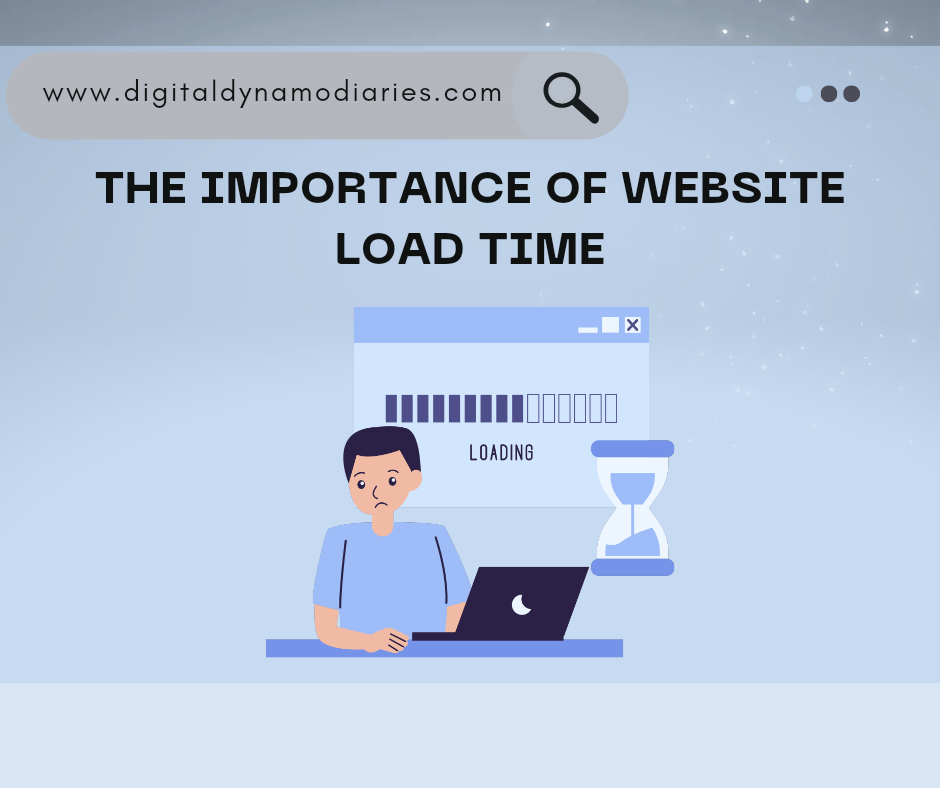The Importance of Website Load Time
In the fast-paced digital age, the speed at which your website loads can make or break your online presence. Website load time is crucial for user experience, search engine rankings, and overall business success. Let’s dive into the importance of website load time and what you can do to optimize it.
What is Website Load Time?
Website load time refers to the amount of time it takes for a web page to fully display its content to users. This includes the time taken to download all necessary files, such as HTML, CSS, JavaScript, images, and other resources, from the server to the user’s browser. A fast website load time ensures a smooth and efficient user experience, while a slow load time can lead to frustration and abandonment.
Importance of Website Load Time
Website load time has far-reaching implications for user experience, search engine rankings, and conversion rates.
1. User Experience and Engagement
The first impression a visitor has of your website often hinges on how quickly it loads. Studies show that users expect a site to load in two seconds or less. If it takes longer, they are likely to leave, leading to a high bounce rate. A slow website frustrates users, diminishing their overall experience and reducing the likelihood of engagement or return visits.
2. Search Engine Rankings
Google and other search engines prioritize user experience, making website speed a significant factor in their ranking algorithms. A faster website not only enhances user experience but also boosts your position in search engine results. This increased visibility can lead to more organic traffic and potential conversions.
3. Conversion Rates
Website speed directly impacts conversion rates. Research indicates that even a one-second delay in page load time can result in a 7% reduction in conversions. Whether you’re running an e-commerce site, a blog, or a corporate website, a fast-loading site can significantly improve your conversion rates, leading to higher sales and engagement.
Key Factors Affecting Website Load Time
Understanding the factors that influence website load time can help you identify areas for improvement and implement effective optimization strategies.
1. Server Performance
The server hosting your website plays a crucial role in load times. A high-quality hosting provider with robust server capabilities ensures that your site loads quickly, even during traffic spikes.
2. Image Optimization
Large, unoptimized images can significantly slow down your website. By compressing images and using appropriate formats, you can reduce their load time without compromising quality.
3. Browser Caching
Browser caching stores static files, such as images, CSS, and JavaScript, on a user’s device. This way, the browser doesn’t need to re-download these files every time the user visits your site, speeding up the load time for returning visitors.
4. Code Optimization
Efficient, clean code reduces the amount of data that needs to be processed and transmitted. Minifying CSS, JavaScript, and HTML files by removing unnecessary characters, comments, and spaces can enhance load times.
5. Content Delivery Network (CDN)
A CDN distributes your website’s static files across multiple servers worldwide. When a user accesses your site, the CDN delivers the content from the server closest to their location, reducing latency and speeding up load times.
How to Measure and Improve Website Load Time
Several tools and strategies can help you measure and optimize your website’s load time to ensure optimal performance.
1. Tools for Measuring Load Time
Various tools can help you measure and analyze your website’s load time. Google PageSpeed Insights, GTmetrix, and Pingdom provide detailed reports on your site’s performance, highlighting areas for improvement.
2. Practical Steps to Improve Load Time
Implementing practical steps to optimize your website’s load time can lead to significant performance gains.
– Optimize Images: Use tools like TinyPNG or ImageOptim to compress images.
– Enable Compression: Gzip compresses your files, reducing the time it takes for them to load.
– Leverage Browser Caching: Configure your server to specify how long browsers should keep images, CSS, and JavaScript files.
– Minimize HTTP Requests: Reduce the number of elements on your page to minimize HTTP requests.
– Choose a Reliable Hosting Provider: Invest in a hosting plan that meets your site’s performance needs.
– Use a CDN: Implement a CDN to deliver content faster to users around the world.
Conclusion
Website load time is a critical aspect of your online presence, influencing user experience, search engine rankings, and conversion rates. By understanding and optimizing the factors that affect load time, you can create a faster, more efficient website that keeps users engaged and coming back for more. Invest in the right tools and practices to ensure your site loads quickly and smoothly, setting the stage for sustained online success.

One thought on “The Importance of Website Load Time”